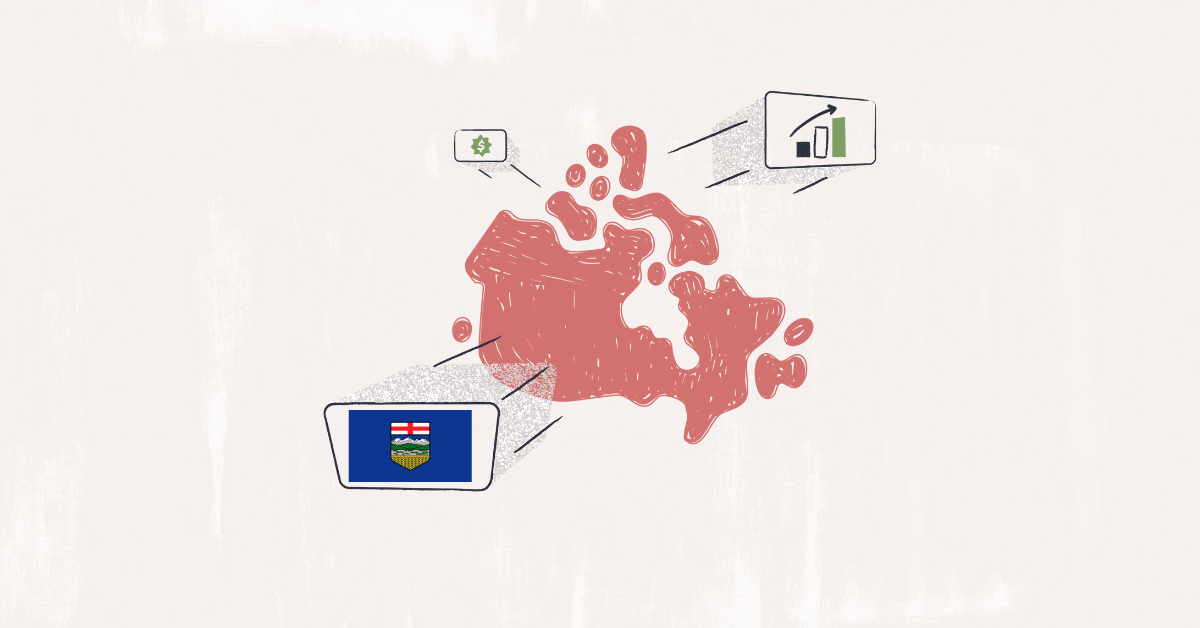Become an insider!
Get our latest payroll and small business articles sent straight to your inbox.
When running small business payroll, it’s important to understand payroll deductions. Knowing how they’re calculated, and at which point of the payroll process they need to be applied, is essential for remaining compliant, avoiding costly errors, and paying employees accurately.
What are payroll deductions?
Payroll deductions are the amounts withheld from an employee’s pay cheque by their employer. Some are mandatory deductions, also called statutory deductions, while others, such as health benefits and garnishments are not. The withheld funds go towards things like taxes, benefits, and contributions to the Canadian Pension Plan (CPP).
How are payroll deductions calculated?
There’s no one-formula-fits-all for payroll deductions. The calculations depend on a number of variables, including province or territory and the type of deduction it is.
Given that, it’s best to look up the guidelines for the specific deduction you’re working with as well as the provincial or territorial guidelines to make sure you have it right.
What are pre-tax and post-tax deductions?
Pre-tax deductions are deductions subtracted from an employee’s gross pay. Post-tax deductions, on the other hand, are taken from an employee’s net pay — in other words, the take-home pay after taxes are taken.
Some examples of pre-tax deductions include:
- Income tax
- CPP
- Employment Insurance (EI)
Some examples of post-tax deductions include:
- Union dues
- Garnishments
- Savings plans
How do payroll deductions work?
Payroll deductions are typically processed each pay period and are then filed with and paid to the Canada Revenue Agency (CRA) or other agencies like Revenu Québec or Unions.
The amount subtracted from the employee pay depends on a number of things, such as the individual’s TD1 Personal Tax Credits Return form, provincial or territorial regulations, other applicable tax laws, and withholding information provided by either the employee or a court order.
Common types of payroll deductions.
Statutory deductions
Statutory deductions are mandatory withholdings — in other words, they’re not optional. You might also hear them referred to as payroll taxes. All employers are required to subtract them from an employee’s pay, unless an employee is exempt from one of these deductions.
Income Tax
Income tax refers to the federal and provincial taxation on employee earnings. Income can come in many different forms, such as employment income, investment income, commission income, and retirement income.
The tax system for both levels of government works on a graduated or progressive basis. What this means is when someone earns more money, they pay more in taxes based on income brackets determined at the federal and provincial levels.
Keep in mind that the federal and provincial or territorial levels have their own tax rates. For provincial income tax, knowing which applies to your employee depends on their province or territory of employment rather than where they live. When you’re not sure, the CRA can provide a proper ruling to determine which province or territory to use.
The rates for these taxes are updated biannually through calculations referred to as tax tables.
Pro tip: Payroll software can update tax tables so you don’t have to worry about using the wrong calculations.
Employment Insurance premiums
Canada’s employment insurance deductions contribute to supporting individuals when there’s an interruption in their work. This can be because of job separation, parental leave, caregiver benefits, and sick benefits. Unless an employee is exempt, this is deducted from each pay cheque. Employers are required to contribute 1.4 times the amount of EI premiums deducted from an employee’s remuneration.
Did you know: If you provide your employees with a wage loss replacement plan for short-term disability, you can request to reduce your EI rate through Employment and Social Development Canada (ESDC). Check out What is the EI Premium Reduction Program.
Canadian Pension Plan (CPP) base contributions
Commonly referred to as CPP, Canadian Pension Plan deductions are another mandatory payroll deduction, unless the employee is exempt. This deduction is collected over time for when an individual retires and is matched dollar-for-dollar by the employer.
This taxable benefit replaces a portion of their income when they retire and continues for the rest of their life.
Note: Québec uses the Québec Pension Plan (QPP) rather than CPP.
CPP first additional contributions
In 2019, the government introduced CPP first additional contributions. These take effect after base contributions, up to the Year’s Maximum Pensionable Earnings (YMPE). Also called the first earnings ceiling, this was set by the CRA and changes annually. Employers also match these contributions.
CPP second additional contributions (CPP2)
CPP second additional contributions, also called CPP2, CPP enhancement, and second additional CPP, was introduced in 2024. This applies to income above the YMPE and up to the Year’s Additional Maximum Pensionable Earnings (YAMPE). This second earnings ceiling was also set by the CRA and changes annually. CPP2 is another employer-matched contribution.
Read our small business guide to CPP2 to learn more about the difference between these CPP contributions.
Health benefits
Health insurance
Health insurance covers medical, dental, and/or vision health. These private plan premiums are voluntary deductions, meaning employees must opt in to receive any workplace health benefits.
Short-term and long-term disability
Short-term and long-term disability coverage ensures employees receive a percentage of their salary or wages (typically 60%-85%) in the event of an accident or illness that leaves them unable to work, either temporarily or permanently. This deduction type would be used to collect employee premiums towards this insurance.
Life insurance policies
Life insurance
This deduction is used if an employer provides life insurance coverage, and your employees have signed up to receive basic term life insurance protection through the workplace. The premiums associated with the coverage are deducted from an employee’s pay, unless the employer is paying the premiums on behalf of the employee.
Supplemental life insurance
Supplemental life insurance adds onto the base life insurance policy provided through the company and cannot exist without the life insurance premium. If your employees opt into additional life insurance coverage through your plan, you’d use this deduction.
Dependent life insurance
Employees can opt into dependent life insurance to provide coverage for a dependent spouse or child. If your employee is paying for this additional coverage, you can use this deduction type to deduct the premiums directly from an employee’s payroll.
Accidental Death & Dismemberment (AD&D)
AD&D, sometimes called accident insurance, offers specific coverage for specific circumstances. It’s used for instances where an accident (such as a workplace accident) has caused the employee to die or lose a body part or function of a body part (such as loss of sight).
It doesn’t replace life insurance. In fact, it’s known as a “double indemnity” insurance because beneficiaries could receive a payment from AD&D as well as the life insurance benefit.
Note: Depending on the life insurance policy, your employees may only see a single deduction labelled something like “group benefits” or “insurance premiums” on their pay stubs. Even though the individual types are distinct from one another, they’re often lumped together for simplicity on payroll statements.
Garnishments
Garnishments
Otherwise known as Wage Garnishments, garnishments are a deduction type that is used if an employee is required to pay a debt as a result of a court order. The garnishment is deducted directly from an employee’s pay cheque until the entire debt is paid off or alternative arrangements to pay the debt have been made through the court by the employee.
Retirement
Registered Retirement Savings Plan (RRSP)
Employees can put aside money for retirement through a Registered Retirement Savings Plan, commonly referred to as an RRSP. This deduction type would be used to manage employee contributions if the amounts are being deducted directly from their pay cheques.
Registered Pension Plans (RPP)
This is another option for employees to put aside money for their retirement. Arranged by an employer or a union, a Registered Pension Plan provides a pension to employees via periodic payments. Both the employer and employee contribute to these plans.
Other withholdings
Profit sharing
Profit sharing gives employees a chance to invest in the company’s financial success and can be a great incentive for retention. Employee profit sharing plans (EPSPs) are an arrangement where the employer shares profits with employees or a designated group of employees.
In a nutshell, contributions are paid to a trustee and that trustee invests for the benefit of the beneficiaries of the plan, including the employees.
Union dues
This deduction is used to hold back membership fees for unionized employees required to pay membership dues to the union.
Union fringe deductions
These are additional benefits provided through the union that are deducted from a union employee’s cheque.
Managing payroll deductions
Thinking about managing all these payroll deductions might feel overwhelming. After all, it’s not just a matter of different calculations and applications of these deductions, but also the fact that they’re not going to all apply to every employee.
While the CRA has tools like the Payroll Deductions Online Calculator to help you make calculations this tool might not be the most efficient for you and your team.
Payroll software, like Wagepoint, automates the calculations, remittances, and payments payroll deductions while remaining compliant. You can set up employee profiles so certain deduction types apply to them automatically.
This means you don’t have to go through the process manually and you’ll have an on-going record of employee deductions right at your fingertips.
Easier deducting starts now.
Having an understanding of payroll deductions will help make working with them easier. Using tools to manage payroll deductions will make it easier still for you and your employees, all while maintaining payroll compliance and paying your employees accurately.
Now that you know about payroll deductions, read about your payroll remittance schedule.
Disclaimer: The content we share on our blog is intended to be informational. It does not replace the expertise of accredited business professionals and should not be taken as legislative advice











